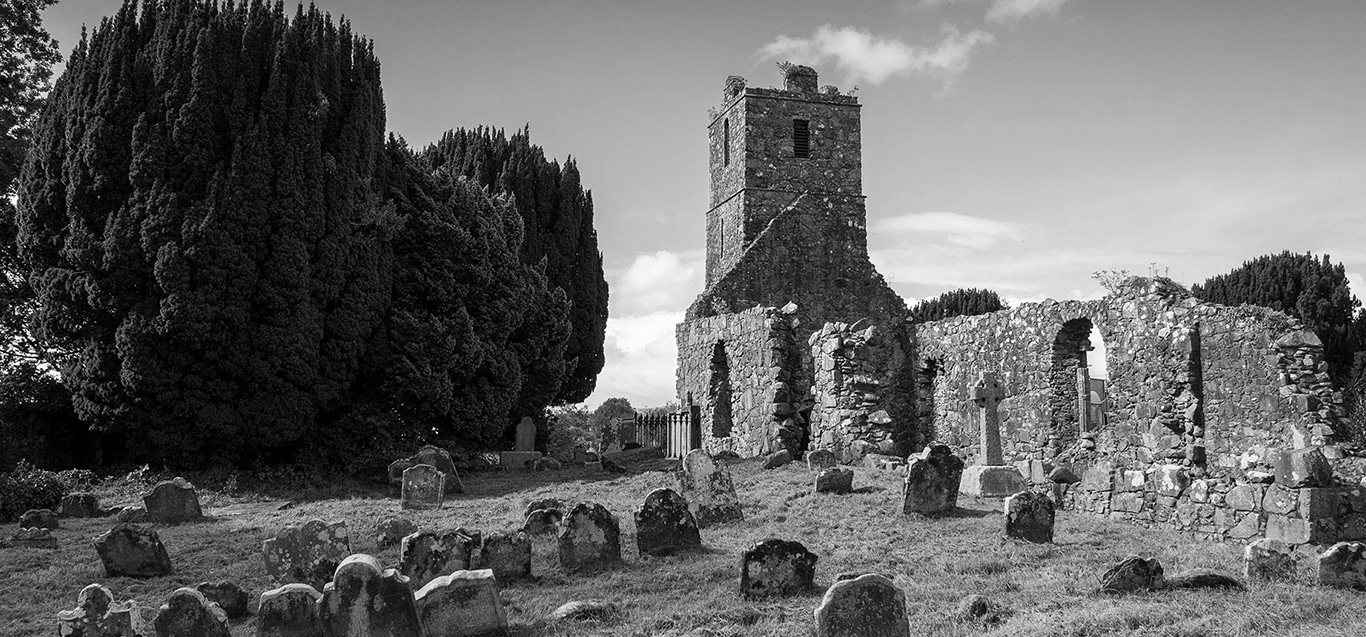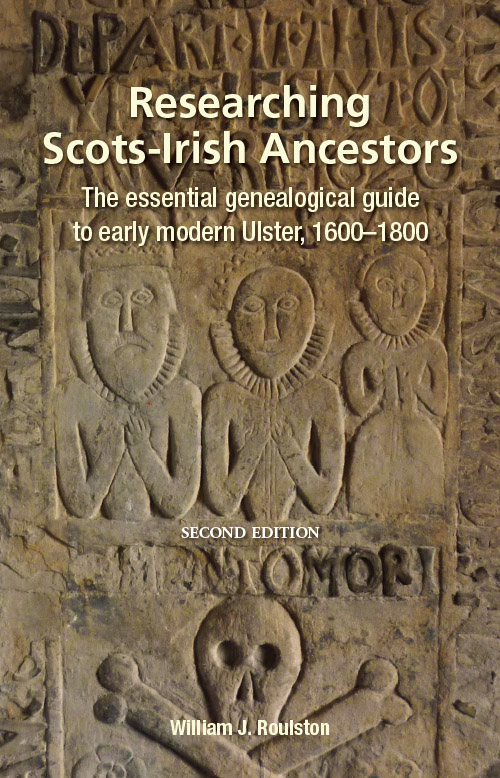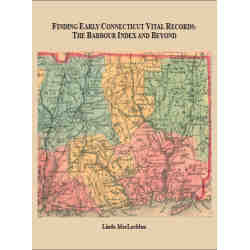
Persons looking for Scots-Irish ancestors invariably discover that Ulster church records are a crucial source of information. Researching Scots-Irish Ancestors, by William J. Roulston, is the most comprehensive source in the field. Chapter 2 provides detailed coverage of Church of Ireland, various Presbyterian, Methodist, Moravian, Quaker, Roman Catholic, and Huguenot denominations. Excerpted below are the opening pages from Chapter 2, which covers Church of Ireland records.
Chapter 2. Church records
If one is researching Irish ancestors prior to the introduction of civil registration of all births, deaths and marriages in 1864 (non-Catholic marriages were registered from 1845), the main sources of information on family history are the records generated by the different religious denominations. These records include registers of baptisms, marriages, and burials. In addition, there are other types of documentation that may be found listed under the heading of church records. Most importantly, these include vestry minutes, which detail the business of the parish and which are dealt with in some detail below. Other materials include records relating to the various levels of administration within the local church or wider denomination (the Presbyterian denominations are particularly good in this regard). Personal items relating to individual clergy, such as diaries, also have the potential to record details of the members of their congregations.
Unfortunately, the records of most churches survive from no earlier than the nineteenth century. The loss of the registers from over 1,000 Church of Ireland parishes in 1922 created an enormous gap. Poor record-keeping and the accidental loss of other registers has further contributed to the paucity of church records from the seventeenth and eighteenth centuries. Nonetheless, pre-1800 records of one form or another exist for more than 200 churches in Ulster and these are identified in Appendix 1 of this book. The majority of surviving church records for the province of Ulster are available for consultation in the Public Record Office of Northern Ireland, though some will be found in other archives (such as the Presbyterian Historical Society of Ireland), while others remain in local custody. With the advent of the Internet, the indexing and digitisation of church records has gathered pace and much is now accessible online.
2.1 The Church of Ireland
The Church of Ireland is an episcopal church with a hierarchical system of church government and services that follow an accepted liturgical form and structure. From 1537 until 1870 the Church of Ireland was the state church in Ireland and was therefore often referred to as the Established Church or simply the Church. Because of its close links with the Church of England, it is also known as the Anglican Church. Due to its official position, the Church of Ireland enjoyed privileges denied to other denominations. Despite its standing, however, the Church of Ireland never enjoyed the support of more than a minority of the population of Ireland, probably no more than 10% during the eighteenth century. In Ulster it enjoyed strongest support from the general populace in those districts where the immigration of English families had been significant during the seventeenth century, including south Antrim, north Armagh and north-west Down. In other areas it was noticeably weaker, but through its legal underpinning and support from the landed classes it was able to maintain a presence as an institution across the province.
The basic administrative unit in the Church of Ireland is the parish. For the most part, the Church of Ireland continued with the existing network of medieval parishes. Occasionally parish boundaries were altered and new parishes created. Moira parish in County Down, for instance, was created in 1722 by detaching a number of townlands from Magheralin, while Clogherny parish in County Tyrone was created out of Termonmaguirk in 1732. In areas where the Anglican population was low, several parishes may have formed an ecclesiastical union. For example, at the beginning of the eighteenth century the parishes of Ballyhalbert, Ballywalter and Inishargy in County Down (overwhelmingly populated by Presbyterians) were united, with the Anglican place of worship for all three at Balliggan in Inishargy.
Parishes are grouped together to form dioceses, each of which is headed by a bishop. Again, the medieval network of dioceses was continued post Reformation. Ulster is divided between eight dioceses – Armagh, Clogher, Connor, Derry, Down, Dromore, Kilmore and Raphoe – which form part of the ecclesiastical province of Armagh headed by the archbishop of Armagh. Within the Church of Ireland, the archbishop of Armagh is the most senior churchman and is known as the Primate of All Ireland.
2.1.1 Church of Ireland registers
From 1634 each Church of Ireland parish was required to keep proper records of baptisms, marriages, and burials. As noted above, among the most serious casualties of the destruction of the old Public Record Office of Ireland in Dublin in 1922 was the loss of over 1,000 sets of Church of Ireland registers, many of which were for parishes in the province of Ulster. Nonetheless, a greater number of Anglican registers survive from the pre-1800 period than those of other religious denominations. For a small number of parishes there are records dating from the seventeenth century onwards. The earliest surviving records are those for St Thomas’s Church (later Christ Church cathedral) in Lisburn (then called Lisnagarvey), in Blaris parish, which exist from as early as 1637. The original register has been published as The Register of the Parish Church of St Thomas, Lisnagarvey, Co. Antrim, 1637–1646, edited by Raymond Refaussé (1996). The next earliest registers are those of St Columb’s cathedral in Derry (Templemore parish) which begin in 1642. These too have been published: Registers of Derry 32 THE ESSENTIAL GENEALOGICAL GUIDE TO EARLY MODERN ULSTER 1600–1800 Cathedral, 1642–1703, issued by the Parish Register Society of Dublin (1910). Not all parish registers run continuously from the earliest entry, and there are frequent and often lengthy gaps in the records. For a number of other parishes, while the original registers were destroyed, there are surviving extracts, e.g. Enniskillen, which has extracts from 1667 onwards.
If there are no early registers for a particular parish it may be that the parish was too small, either geographically or with regard to the size of the Anglican population, to sustain a separate identity within the Church of Ireland system. For example, at the southern end of the Ards peninsula, County Down, there were a number of small parishes – Ballytrustan, Slanes and Witter – that never had a Church of Ireland place of worship. Members of the Church of Ireland living in these parishes attended the Anglican church in Portaferry in the parish of Ballyphilip. Important churches drew people from a wider area than the parish in which they were situated. The registers of St Columb’s cathedral in Derry include references to people from far beyond the bounds of Templemore parish. Likewise, the registers for Christ Church cathedral in Lisburn include names drawn from across the Lagan Valley.
Analysis of Church of Ireland records has shown that many people with an affiliation to another denomination appear in Anglican registers. There are various reasons for this. For instance, while there had been some provision for Presbyterian marriages in 1737, it was not until 1782 that marriages conducted by Presbyterian ministers were given the same legal standing as those performed by Anglican clergy. In fact, until 1844 Presbyterian ministers could not perform ‘mixed marriages’, i.e. marry a Presbyterian to a member of the Church of Ireland. For this reason many marriages of members of other denominations, especially those classed as Dissenters, are recorded in Church of Ireland registers. Marriages between Protestants and Catholics may also be found. For example, the marriage register of Donagheady parish in County Tyrone includes a record of the marriage of Alexander Sterling and Ann Kelly on 11 August 1707 with the comment that they had been ‘formerly married by a popish priest, [and] remarried by the Chancellor’s order’.
Information found in registers
The degree of information recorded in Anglican registers varied from parish to parish and even within parishes it could vary depending on who was keeping the register. However, baptism registers typically included the date of baptism, the name of the child and the father’s name. More detailed registers included the mother’s name (including sometimes her maiden name) and the family’s place of residence. The father’s occupation might also have been stated. On rare occasions the names of the godfathers and godmothers were recorded.
Marriage registers recorded the date of the marriage and the names of the bride and groom. Additional information might include the groom’s occupation and the name of the bride’s father. In their most basic form burial registers … continued.




